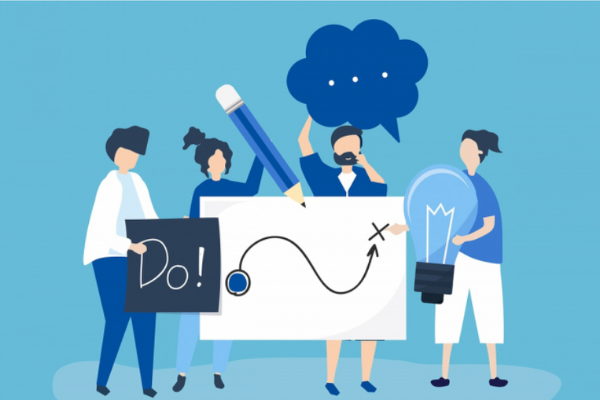COVID-19 is an opportunity to de-commoditize the B2B business
Sourav Borah, Assistant Professor, IIM Ahmedabad, feels that COVID-19 may bring about a permanent change in mindsets of B2B firms when it comes to investments in digital marketing and brand building. But he also asserts that while companies should retain confidence in their salesforce, the latter has to urgently adopt digital savviness and greater customer empathy.

B2B marketing is primarily about relationships. In B2C marketing, you may not meet your customer ever as a company – the interaction happens through third parties such as a supermarket. But B2B marketing is all about relationship building, you must interact with customers more often. Relationships are also layered in B2B markets. There are multiple decision makers all with different objectives and know how. Thus, success of a B2B firm also depends upon developing relationship with various stakeholders.
Let us take the example of a company, which sells printers. In the buyer organization, engineers look at the technical specifications and managers look into the prices. So, when the purchase decision happens, multiple people from different departments are involved in making a choice. Engineers may look only for better quality, whereas managers may simply look for quality at a reasonable price. Hence, customer engagement at various levels was important. In the current scenario, a salesperson is unable to visit customers, which has become a major challenge for B2B marketers.
Another problem is that there won’t be exhibitions for some time, so we cannot have all customers in one place. As a result, one of the critical sales channel is deleted.
Digital exhibitions have come up, but they may not be able to achieve similar levels of success in a B2B situation because of large ticket sizes as well as high levels of customization involved in B2B.
This crisis is precipitating varied responses from B2B firms. Companies are coming up with personalized emails specifying the business details and other information. Some of them started developing or adopting new technological solutions like video conferencing. Others have even resorted to old marketing techniques like tele-calling for initial lead generation.
Remember, you are a brand too!

Image credit: https://bit.ly/3hygBau
I teach a course on Customer Analytics at IIM Ahmedabad. Even till a year back, B2B marketers who enrolled in my course were very apprehensive about digital marketing. Most of them used to tell me that the course is good, but they thought that Facebook marketing or LinkedIn marketing was for B2C companies. They hired talent that is more towards relationship building, and not for a technologically driven digital market. Larger corporations had more difficulty in changing their mindset than smaller corporations.
When I interact with B2B marketers, one problem I always point out is that most B2B marketers treat their products as commodities. Marketing for them is less of brand building but more of commodity selling. For example, let us imagine a company that supplies gases (such as carbon dioxide and nitrogen dioxide) to soft drink producers. One may argue that it’s a gas and there is no roam for marketing and branding or even price differentiation. I have always countered these perceptions; and argue that B2B companies have to de-commoditize the commodity market and building a good brand is the way to do that. One way to do it is to find other markets where gases may not be a commodity or customers are not price sensitive. By investing in branding, you can extract a premium in other potential markets.
After COVID-19 was declared a pandemic, several automobile companies started manufacturing ventilators. This seems to be a logical choice, both because the automobile market was hit hard and also because they wanted to help the government and the people. Now, if they had not taken their brand building exercise seriously, it would be difficult to enter the ventilator market, as nobody (suppliers, distributors etc.) would trust them.
To take another example, COVID has disrupted the supply chain, and it will be hard to keep promises such as delivery all the time. If a value chain member faces challenges due to COVID, it will land the company in further delay. A brand name assures the customer, particularly in B2B, that you are a reliable supplier and will come up with a solution soon. So, having a good brand is very important for B2B businesses during a pandemic. Thankfully, B2B firms are now realizing this.
So the apprehension that ‘branding and B2B don’t mix’ is hopefully, becomes one of the biggest casualties of COVID-19.
As digital marketing starts penetrating the B2B space, more technologically and data driven decisions will be made. Earlier, B2B companies functioned on a single premise, the business is awarded to the lowest quote. Now they will be compelled to reassess their past orientations.
The modern sales department
What companies or B2B firms need at the moment is a technologically-driven salesforce. While technology will play a great role to some extent, I don’t see human interaction going away completely.
I would suggest that B2B companies keep two teams. One should be for operational purposes; they will continue to do things; and if there is a change, they will implement changes at the ground level. The other team should be an entrepreneurial team – their job will be to find avenues for digital marketing where they can proceed.
Digital marketing has a unique advantage over physical conversation. We can record almost all conversations and get an inside view of the organization; nothing gets lost in transition.
Digital marketing also gives businesses the chance to know their customer better as they are constantly in touch with them, however there are limits to this as well.
Some shifts to digital will remain more permanent – those aspects, which you were not able to physically manage. For example, people did not visit their distributors in rural markets regularly. Now they can get in touch with them digitally on a daily basis. To emerge as a winner from COVID-19, organizations have to balance both physical and digital channels. In marketing this is known as Omni-channel, where both channels feed into each other. A firm needs to give the digital team flexibility; allowing them to be entrepreneurial, have agility so that they can come up with new ideas and build the next technology. At the same time, a firm should have an efficient physical team, which operates locally.
Are some roles under threat?
There are some sales jobs already facing challenges. In this context, the salesperson’s mindset is the most important factor. If his mindset was just to offer deals, then those roles are under threat. They have to be able to think ahead of time while engaging with the customer. Previously many salesperson used visit the customers in person. It can be done digitally now which in my view is more effective.
Formerly, there were salespeople who were simply selling, getting orders and giving margins – that is not going to be the next generation of salespeople.
Next generation salespeople have to be empathetic – they must know their customer; they will have to be more strategic in nature. They should not just look for this deal, but they must be able to think beyond sales and impact on the overall organization. They need to be integrated with other parts of the organization; they cannot function in isolation. It is important to be aware of what is happening in the organization and resources available before they go and commit to the customer. Salespeople need to be trained and enabled digitally. But before anything else they need to have a mindset which embraces change.
Team in normal times, family in crisis

Image credit: https://bit.ly/3hCnPdz
One thing I tell organizations is not to reduce your work force in the present era, because technology cannot solve all problems. Personal contact, personal touch and relationship always help an organization in the long run. This is especially true in developing markets like India which have poor physical and digital infrastructure.
Many organizations rely on contractual employment. But in my opinion this not a good option during the pandemic. COVID has taught us the importance of loyalty in business. Working during COVID will be difficult if a salesperson is not loyal to an organization.
A significant challenge in any sales role is uncertainty associated with the process. After all, not all meetings lead to sales. To add to this challenges, many salespersons are being fired during the pandemic.
For contractual employees, these uncertainties are much higher, which may lead to lack of strategic selling by the salesforce. When fear of job loss is high, salesperson will want to maximize his/her gain in the short run. The only way to achieve the same is sell more and more, which leads to higher incentives for the salesperson. Thus, a salesperson is far less likely to understand the customer and rather will be interested only is faster conversion of a lead. This leads to higher levels of miss-selling, which may create greater challenges for the company in future.
In my view during such a natural disaster, organizations should give assurance to the employees that their jobs are safe, they will be taken care of and they won’t have to worry about their family. This will enable the sales person to perform to the best of their abilities, keeping the best interests of the company and the customers in their mind. Again, organizations should train their salespeople to enhance digital marketing skillset which will make salespersons more efficient and effective.
Be different offline, consistent & focused online
Standing out is necessary in the online space, as it is becoming very cluttered. For a B2B firm, it should be multi-pronged approach. First, carry out the differentiation physically, understand and appreciate your product and then go digital. There has to be something about your product that should stand out. You have to put forward a coherent message across all channels.
For instance, Zoom has evolved as a new enterprise solution. Almost all organizations are relying on Zoom to conduct meetings. The primary reason for the same is user friendliness. There are other platforms which are not as user friendly, so Zoom gained the market share.
So if you are Zoom, you have to put forward the same message – user friendly – across the channels. This will set you apart from other companies. But let us say you are another channel, you cannot talk about user friendliness again.
What should you do? You should find out other ways to differentiate yourself such as focusing on new attributes (such as quality or technical specifications). However, what I observe in the market that most competitors of Zoom are mere copycats. I think rather than becoming a copycat, companies must look at how they can differentiate.
Extended ideas network

Image credit: https://bit.ly/30Lhk14
To market yourself successfully, you need to have an inbuilt team that runs your digital campaign on a day-to-day basis. But simultaneously, you also need to engage with other people who are more entrepreneurial in nature.
This entrepreneurial input could come from a university, mass communication colleges, B-schools, etc. Business owners should consult with experts in the digital space, for example university professors to give business ideas for the digital advertising space. A similar practice is followed in numerous areas like the medical field, where a company will not just have in-house R&D but also work with multiple universities to come up with new solutions. Such collaborations however, are rare in Indian B2B firms. Creating extended network of academics, peers and even competitors may become a game changer.
Sourav Bikash Borah is Assistant Professor of Marketing at Indian Institute of Management (IIM), Ahmedabad, India. He earned his PhD in Marketing from IIM, Bangalore. His research interests include service management strategy, supplier-relationships, and business strategies in emerging markets. He has published papers in multiple top-tier academic journals such as Journal of International Business Studies, Journal of the Academy of Marketing Science, Journal of International Marketing and Journal of Business Research. Prior to joining PhD, he worked in automobile as well as banking and financial sector.













Leave a comment